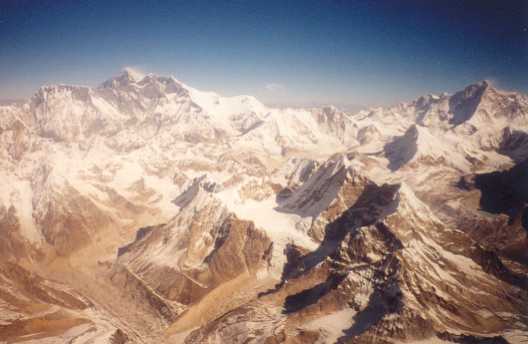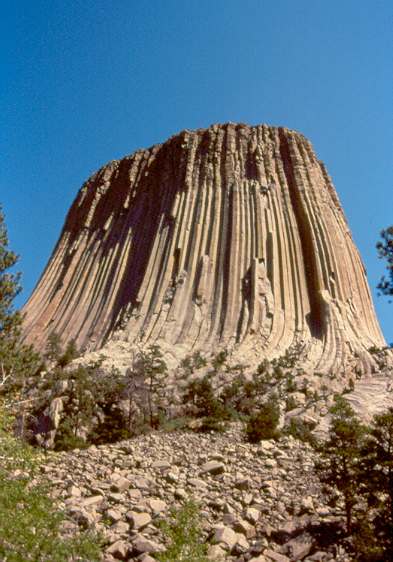| Yves' Pages |
|
|
| Everest | |
|
Sagarmatha ("Godess of the Sky") in
Nepali, Chomolungma ("Mother Godess of the Universe") in Tibetan,
or Mount Everest in English [the peak is in the top-left quadrant
of the picture]. At about 8,852 meters high (about 29,035 feet), Mount Everest is the tallest peak on dry land. Tenzing Norgay (Nepal) and Edmund Hillary (New Zealand) were the first to summit the mountain in 1953 (or at least, the first to come back alive). The English name of the peak comes from Sir George Everest, a British surveyor-general of India, who was the first Westerner to record the height and location of the peak. The peak is now a popular place to climb and can get somewhat crowded. On May 10th 1993 forty persons got to the summit the same day. |
 |
| Bryce Canyon | |
|
|
Morning in Bryce Canyon, Utah, USA. The most remarkable feature of the park are the Hoodoos, tall pillars, pinnacles and spires of red bright stone of fantastic shape. They were chiseled from the Aquarius and Paunsaugunt plateaus by differential erosion about 10 million years ago. The Paiutes, who lived in the region before the Mormon settlers arrived, explained the colorful hoodoos as "Legend People" who were turned to stone by Coyote. Bryce Canyon is surrounded by deserts, but the highlands of the park get much more rain and snow than the lowlands below, and stay cooler during the hot summers. The comparatively lush ecosystems that result are as many fertile islands towering above a vast arid landscape. This is the territory of many mammals such as chipmunks, squirrels, prairie dogs, mountain lions, pronghorn sheep, coyotes, gray foxes, bats, and mice. The flora is also very rich and includes Ponderosa pines and fir-spruce forests, as well as many wildflowers like gentians, sego lilies, bellflowers, yarrows, manzanitas, and gillias. The canyon and the park are named for the Mormon pioneer Ebenezer Bryce who settled in the Paria Valley with his family in 1875. The people started to call the canyon with the strange rock formations near Ebenezer's home "Bryce's Canyon". The name remained after the Bryces moved to Arizona in 1880. The site was designated as National Park in 1928 and covers 37,277 acres. It gets about 1.5 million visitors every year. |
| Devil's Tower | |
|
Afternoon sky at Devil's Tower, Wyoming, USA. This lonely outcrop of rock in the hills of Northeastern Wyoming is a dyke, the solidified lava tube of an ancient volcanic cone which has been eroded. The tower is 1,267 feet above the meanderings of the Belle Fourche river and the 1,347 acres park host many deer and prairie dogs. The landscape is mostly made of pine forest and grassland. Some moviegoers might remember the mountain featured in Encounter of the Third Kind, at the top of which the alien spaceship lands at the end of the movie: it was Devil's Tower. The site was designated National Monument in 1906. It was the first National Monument in the US. |
 |